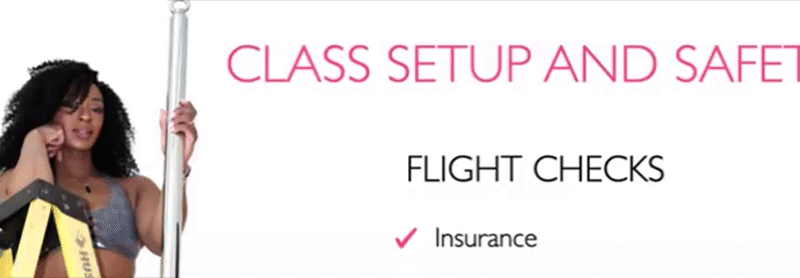Social media marketing may seem confusing and overwhelming sometimes. It is still a great way…

How to calculate depreciation of pole equipment
*this post focuses on US tax law
What is depreciation?
Depreciation is when something loses value over time.
Put in tax terms, depreciation is an accounting method for distributing the cost of a physical asset over its life expectancy.
As a pole business owner, especially if you are just starting your business OR making a major investment/upgrade in your business, you likely have several large assets that can be depreciated on your taxes such as poles (stage, tension, and permanent), mats, aerial equipment, lights/sound systems for showcases, flooring you installed, mirrors, etc.
What assets can be depreciated?
According to the Internal Revenue Service (IRS), any property you wish to depreciate on taxes must meet the following requirements:
- You must own the asset.
- Even if the property is subject to debt (i.e., a loan), the business is considered the property owner.
- You must use the property for your business or produce income.
- A pole used to teach classes, including a pole in your home used to teach virtual lessons produces income. A pole in your home that you use exclusively for personal practice if you are a pole instructor that you use to lesson plan on but do not teach students on would also likely qualify. If you are a pole hobbyist, your home pole would not qualify as a business expense.
- The asset must have a useful life determined by the IRS.
- Meaning it must be something that wears out. For instances, mats have an obvious life to them (they get compressed over time) and poles have a 2-5 year lifespan according to manufacturers, dependent on exact wear and tear and your location.
- The asset must last longer than one year.
- It must not be specific intangible property, certain term interests, equipment used to build capital improvements, or property placed in service and disposed of in the same year.
- Intangible property is something like a copyright or digital logo. Grip aides and rubbing alcohol used to clean poles would constitute physical property placed in service and disposed of in the same year and are therefore not subject to depreciation.
How to actually depreciate assets on your taxes?
Section 179 of the US tax code allows business owners to deduct anything under $2,500 in the year it is purchased with no depreciation necessary!
If your equipment purchase meets these criteria, this will be by far the easiest way to receive a deduction on your taxes.
If you have purchased all new poles for your studio, you are likely over the $2,500 threshold and could depreciate your assets.
The IRS has a page for frequently asked questions about depreciation, found here.
There are several types of depreciation.
The most straightforward type of depreciation is straight-line depreciation, meaning the depreciation of the equipment is the same over a particular number of years.
If you work with a tax professional, like IPIA partner Tits N’ Taxes, you don’t need to do all this math yourself. If you use an online system like Quickbooks/Turbo Tax, you will also not have to do the math yourself but it is important to understand the general idea so you can make the best decision for your tax situation regarding depreciating the cost of your new asset(s).
Depreciation Example
Check out this example using pricing from January 2025 for purchasing 6 XPERT Pro (PX) 45 mm poles in Chrome for an 11 ft ceiling, 6 ball mounts, and 6 crash mats for around $6K USD (not including shipping).
The salvage value of your new equipment in this example is $0 because it will only be retired if it becomes unsafe, meaning it has no resale value. We’ll set the useful life at 5 years (remember manufacturers say that a pole has a life span of 2-5 years).
That means the straight-line depreciation for this purchase will look like this:
Annual Depreciation Expense= (Purchase Cost of Asset–Salvage Value)/Useful Life of the Asset
$1,274.54 = (6,372.70–0)/5
For each of the next five years, starting the year you purchase the equipment, you can deduct $1,274 as your depreciation of assets per year on your taxes.
You will have to track this for all five years. At the end of five years, if your equipment is still in use, you do have to continue listing the item as a business asset, but it will be a business asset with a $0 per your balance sheet.
This item is still insurable at its fair-market replacement value (got questions about insurance? Talk to IPIA partner Francis L. Dean). Ideally, an asset doesn’t depreciate to $0 until the year it is being retired, but there is some wiggle room here. The item does not need to be retired just because it reached $0 on your depreciation.
Why depreciate your assets?
Part of being a business owner is being strategic about money.
If you get a huge tax deduction your first year in business because of buying a bunch of new equipment, you are unlikely to repeat that expense and subsequent deduction in future years.
Depreciation can be a tax strategy to manage your tax burden. Read more about taxes in this post.
As always, everyone’s tax situation is different and depends on the type of business entity you have, as well as your personal goals and cash flow. Work with a tax professional when possible.



